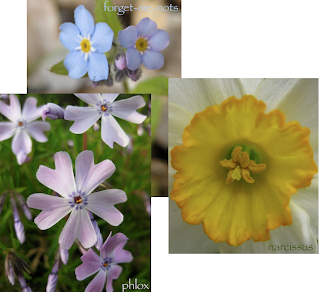Garden - Aphid, Phlox, Narcissus, Forget-Me-Not, Hosta



How do so many of these critters show up so suddenly on one particular plant? I didn't quite find the exact answer, but here's something from the Horticulture website of the University of Wisconsin
The life cycle of most species is rather complex. In Wisconsin aphids spend the winter as eggs. When these hatch in the spring, they produce only wingless females that give birth to live young (without mating = parthenogenetic reproduction). Each female aphid reproduces for a period of 20–30 days, giving birth to 60–100 live nymphs. The nymphs look like the adults but are smaller. The nymphs mature and can produce offspring within a week when temperatures are high. Eggs within these females start to develop long before birth so that a newly born aphid can contain within herself not only the developing embryos of her daughters but also those of her granddaughters which are developing within her daughters. This 'telescoping of generations' means aphids can build up immense populations very quickly. Under ideal conditions, one cabbage aphid could produce 1,560,000,000,000,000,000,000,000,000 offspring by the end of a growing season. (Obviously this doesn't happen, since natural controls – such as weather and predators – eliminate significant numbers of aphids.)
From Backyard Nature, a little more on the life cycle of the aphid:
An "average" aphid life cycle would be something like this:
In spring an egg hatches, producing a wingless female aphid who soon begins parthenogenetically producing new wingless females. Generation after generation of wingless females survive one another until hot weather comes or maybe the plant on which they are living dies and then suddenly some of the females grow wings and fly off. At the right you see what a winged aphid may look like, though they come in many colors and shapes. This new generation of female winged aphid very well may at this time find a plant host of a completely different species from that on which their spring generations have developed. For instance, Green Peach Aphids overwinter as eggs on peach and related trees but in spring they move to various weeds and agricultural crops, and then still later they move to potato crops, only in the fall returning to peach and related trees.
Typically late in the year when it's time to move back to the plant species on which the aphid overwinters, finally some aphids develop into males as well as females. Sexual reproduction then takes place and when the mated females return to the winter plant-host they lay fertilized eggs. Then next spring the females hatch from the eggs and the cycle begins again, with no males in sight.
Last year I didn't clean these guys off frequently enough and they seriously stunted the growth of the Thalictrum and its flowers. So I just keep wiping or hosing them off.
